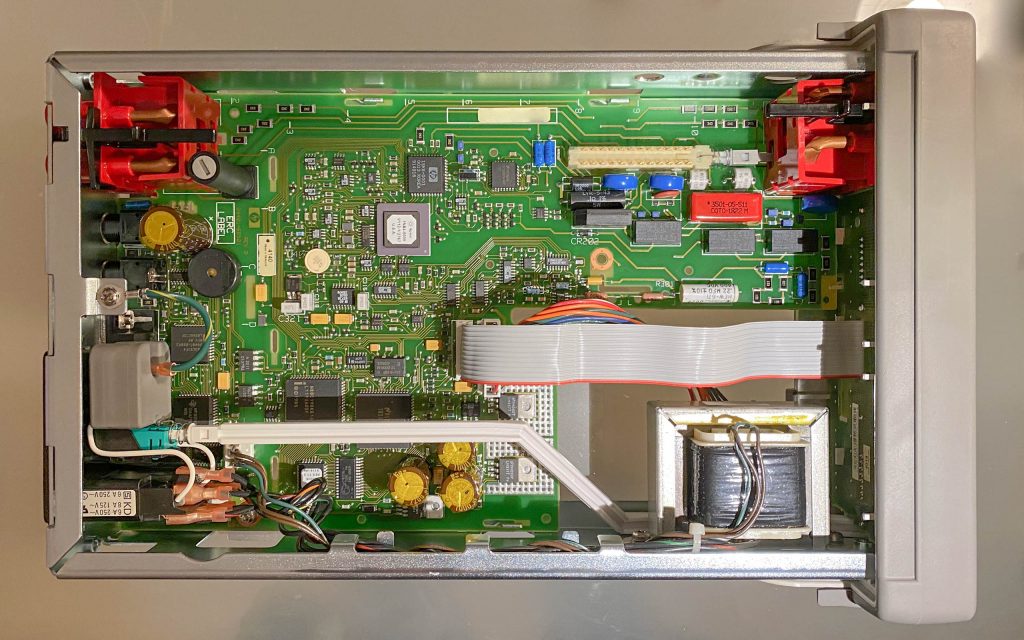The other day I noticed an issue with one of my Agilent 34401A’s: I measured a constant DC voltage and after a few minutes the measured value would start dropping and become unstable. Then I got curious and checked the two-wire resistance mode. Same story, maybe worse.
A word of caution: High voltages found inside the DMM can cause damage, severe injury or death. If you are not authorized or qualified to work on such devices, don’t do it. I don’t take any responsibility for actions you take or the results of these actions. You do everything at your own risk.
Without checking the current range, which might have been a clever thing to do, I immediately suspected a contact issue with the front/rear switch, so I tested the units rear connectors. If the problem had then disappeared, I would have concluded that the front/rear switch was causing the error – in particular the switch contacts for the front connectors. Initially the measurement seemed stable, but after a while the problem resurfaced. So I opened the unit to have a closer look. I applied a (low) voltage, powered the unit on and waited until the readings became unstable.

With the help of the service manual – I followed the signal path until I detected an erroneous voltage: after relay K101 the voltage became unstable. The control signal for the relay was present (very unlikely that a problem here would result in the symptoms described), however manually shorting the relay contact temporarily immediately stabilized the meter’s reading. That left only one conclusion: K101 is the culprit.
According to the table found in the service manual relay K101 is closed regardless of the function/range selection. However, it opens momentarily during function/range switching. This might make it seem plausible that the meter showed correct values for a while right after selecting activating a function (i. e. open and then close K101 again).
K101 is a low thermal emf relay with a rather high voltage rating. The service manual lists it as “Relay-Reed 2A 500 Vdc 5 Vdc-Coil”, part number 0490-1914.

An EEVblog forum search reveals that this is indeed a fairly common issue. Since there are two different relay manufacturers for part number 0490-1914 it would be interesting to know whether there are differences in reliability. My faulty unit used a COTO relay (red package), whereas my other 34401A uses a MEDER relay (blue package).

The more difficult task was to find a replacement for it, which is pretty much unobtanium at this point. With help of the parametric search of a big distributor and also hints/confirmation from some eevblog forum members I finally ordered a COTO 3501-05-511 low thermal emf reed relay which shares a similar pin layout. Similar means that I simply had to cut off one pin. There is a catch though: The new relay is only rated for 200VDC, explaining the smaller size (likely only one reed contact vs two in series in the original).

From now on, on the rare occasion that I have to measure voltages significantly higher than the 200V, I should use the other 34401A. And if that’s not an option: Pre-selection of the function and range can keep K101 closed – at least for the most part.
Later I discovered this interesting post: https://www.eevblog.com/forum/repair/recovery-of-the-relay-k101(0490-1914)-in-hpagilent-34401a/, suggesting that it might be possible to restore functionality by “reflowing” an internal solder joint. Not so sure about it… I did reflow the relay pins, but this would certainly not have been enough to reflow any internal solder connection. Anyways…
That’s one Agilent 34401A saved from the landfill.
